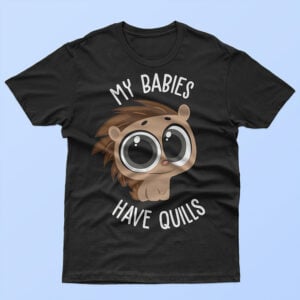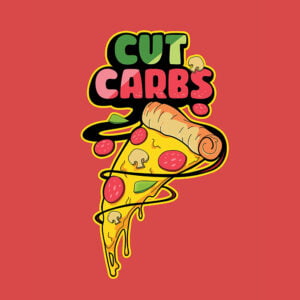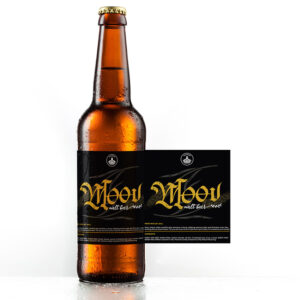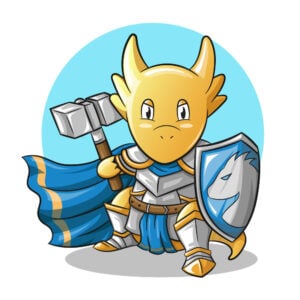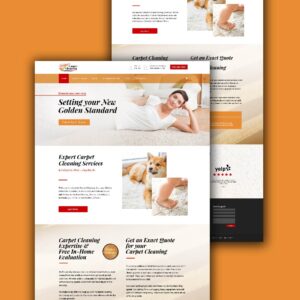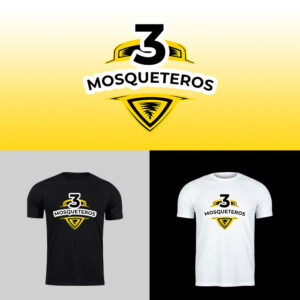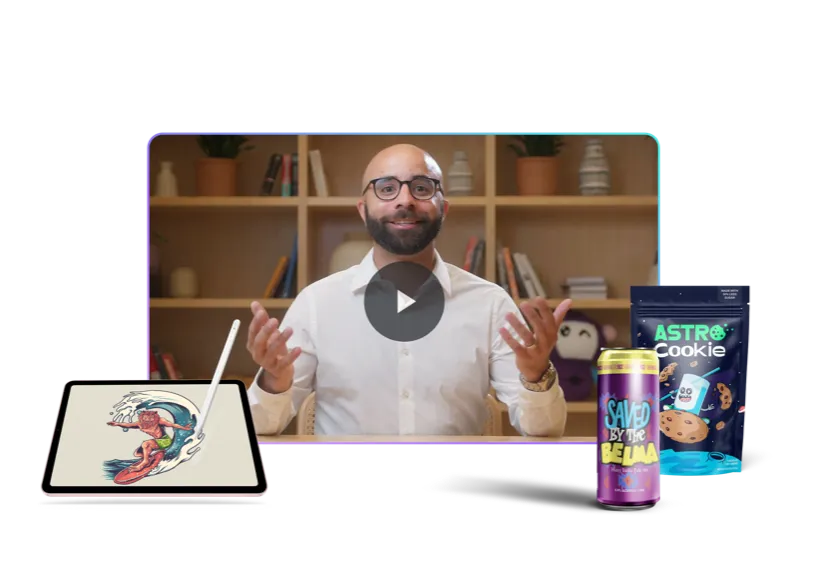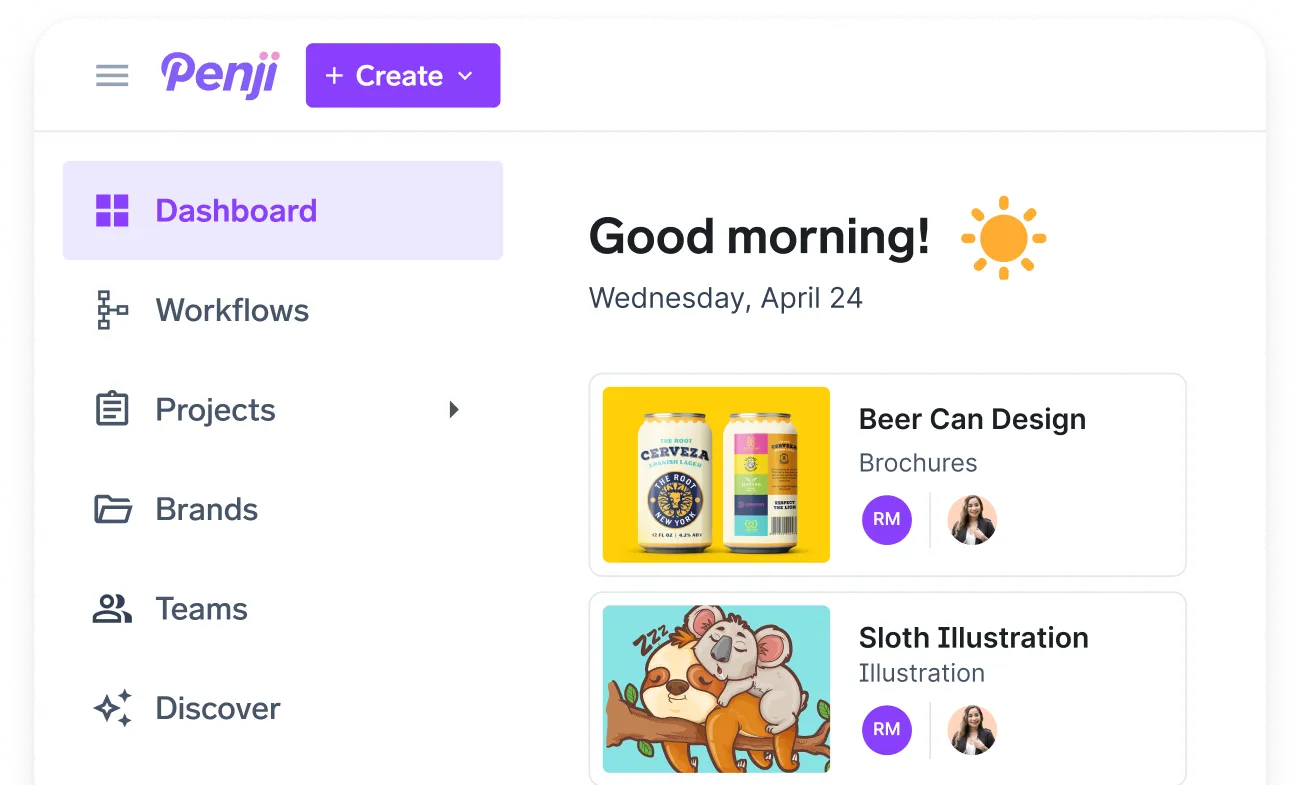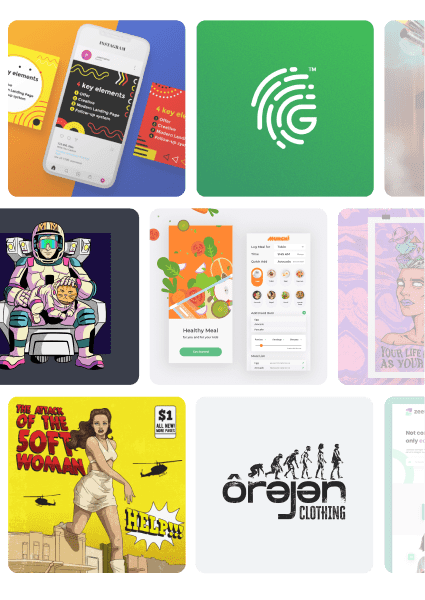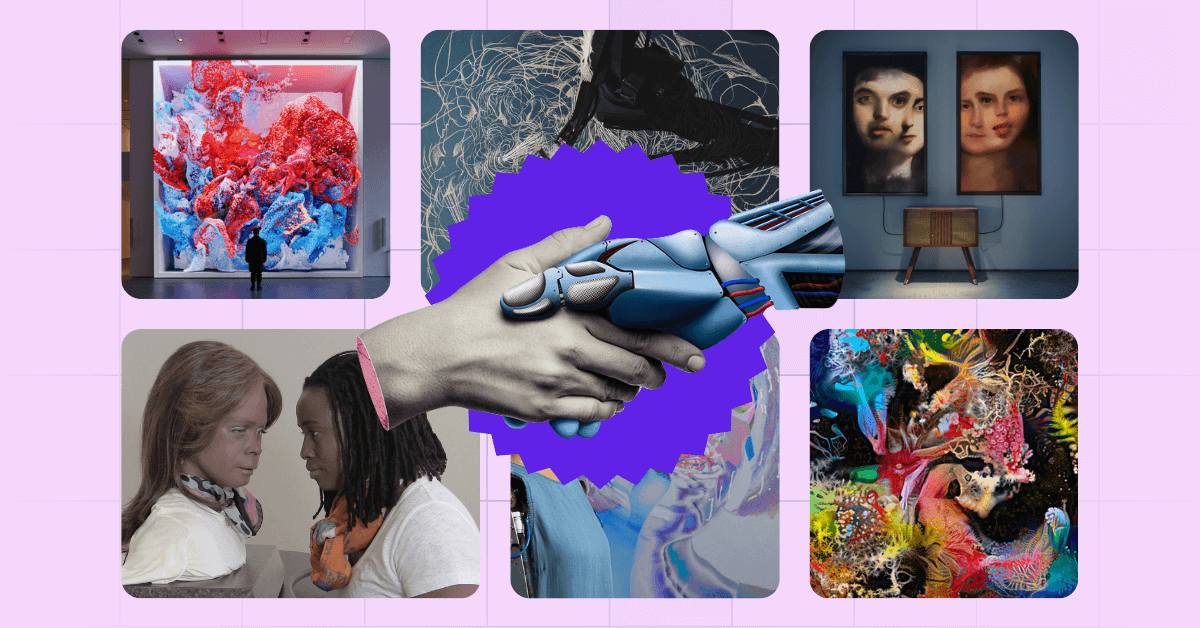
The 2020 pandemic rapidly changed the art market, accelerating its shift from traditional to digital practices, such as augmented reality (AR) and online sales. Similarly, artificial intelligence entered a new era and revealed its potential in the creative industry. While technology is still evolving, AI tools are changing how we create and experience art.
This article will explore how AI provides artists with new tools and techniques. For example, AI art generators can create images from text descriptions. Read on to learn more about AI art creators for artists like you.
The Intersection of AI and Art
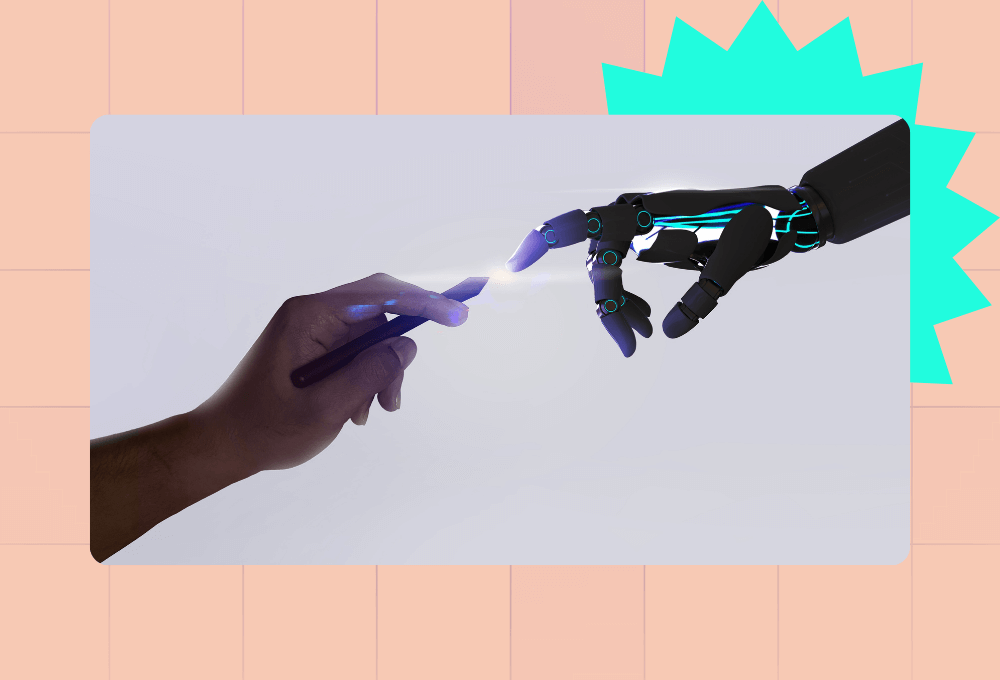
Artificial intelligence (AI) art is a form of art created or enhanced using AI tools. While generally associated with visual art like images or videos, AI art applies to music, writing, and other creative pieces.
AI art creator tools use machine learning (ML) algorithms trained with digitized artwork
data and other related descriptive data. The process allows the algorithms to learn what art is and how to describe it. In addition, AI art tools also use generative adversarial networks (GANs) and neural networks. These advanced technologies enable enhancing or changing existing images or generating new ones based on the user’s text prompts.
So, what are the benefits of AI in the art industry? Let’s explore some of them below:
- Faster processes: Artificial intelligence is becoming a helpful research tool that can help artists and galleries save time. According to Dirk Boll, Deputy Chairman of 20th and 21st Century Art at Christie’s London, tasks that once took days of manual research, such as cataloging, can now be completed in seconds with AI.
- Tracking and Prediction: AI also allows art experts to interpret market trends, track the activities of prominent public figures, and understand collecting behaviors. AI’s capability to interpret vast amounts of data quickly and analyze market developments is becoming easier and faster.
- Identifying Art and Assessing Its Value: This innovative technology also helps art collectors and investors assess the value of different artworks. Since AI can access data from countless historical records, auction catalogs, and other documents, it can also help authenticate artworks.
- Innovative Way of Creating Artwork: AI-powered tools can be used by people with limited artistic skills to create original artwork. This opens creative expression to a broader audience and empowers individuals interested in art.
AI Artists Making Waves in 2025
It is tricky to name the most prominent AI artists today, as the field constantly evolves. So, the term “prominence” can be subjective. However, based on current trends, we present the five AI artists pushing the boundaries of creativity.
1. Refik Anadol
An Artwork from Synthetic Dreams by Refik Anadol, Source: Opensea
Refik Anadol is an internationally acclaimed artist, director, and pioneer in artworks powered by data and machine intelligence. He is currently the Director of Refik Anadol Studio in Los Angeles and a professor at UCLA’s Department of Design Media Arts.
Anadol’s work shows the dynamic interplay between human and machine creativity. He uses the data within the natural environment as the primary medium and the neural network of a computerized mind as a guide. His work encourages us to look at the world, our shared experiences, public art, online networks, and the creative possibilities of AI in new ways.
2. Sougwen Chung
Omnia per Omnia, Source: Issues.org
Sougwen Chung is an award-winning Chinese artist who uses hand and computer-generated marks to communicate the relationship between people and machines. Her work, Omnia per Omnia, creates new landscape paintings by combining an artist’s work, a swarm of robots, and the ever-changing flow of a city.
3. Mario Klingemann
Mario Klingemann’s Memories of Passersby I, Source: AIArtists.org
Mario Klingemann is also a pioneer in the AI art movement. He became popular with the sale of Memories of Passersby I, one of the first AI art pieces bought in a traditional auction house. His artistic explorations are constantly changing, covering various topics from AI and deep learning to computer-generated and evolving art, glitch art, data visualization, and robotic installations.
4. Stephanie Dinkins
Conversations with Bina48, Source: Stephanie Dinkins
Stephanie Dinkins is a New York-based artist who created a platform for artificial intelligence as it intersects with race, gender, aging, and the future. She focuses on working with various communities to promote more inclusive, fair, and ethical AI ecosystems.
Stephanie Dinkins explores the possibility of human-robot relationships by filming ongoing conversations with Bina48, a highly advanced social robot. Through these interactions, Dinkins investigates the potential for long-term emotional connection between humans and AI, shedding light on human-robot interaction and what it means to be human.
5. Sofia Crespo
Neural Zoo by Sofia Crespo, Source: Artist.org
Sofia Crespo is an Argentine visual artist who explores the potential of AI to create new forms of life. Her work often features AI-generated organisms and speculative life forms, raising questions about the future of biology and technology. One of her works is Neural Zoo, which explores the recombination of known elements into new ones.
The Process of Creating AI Art
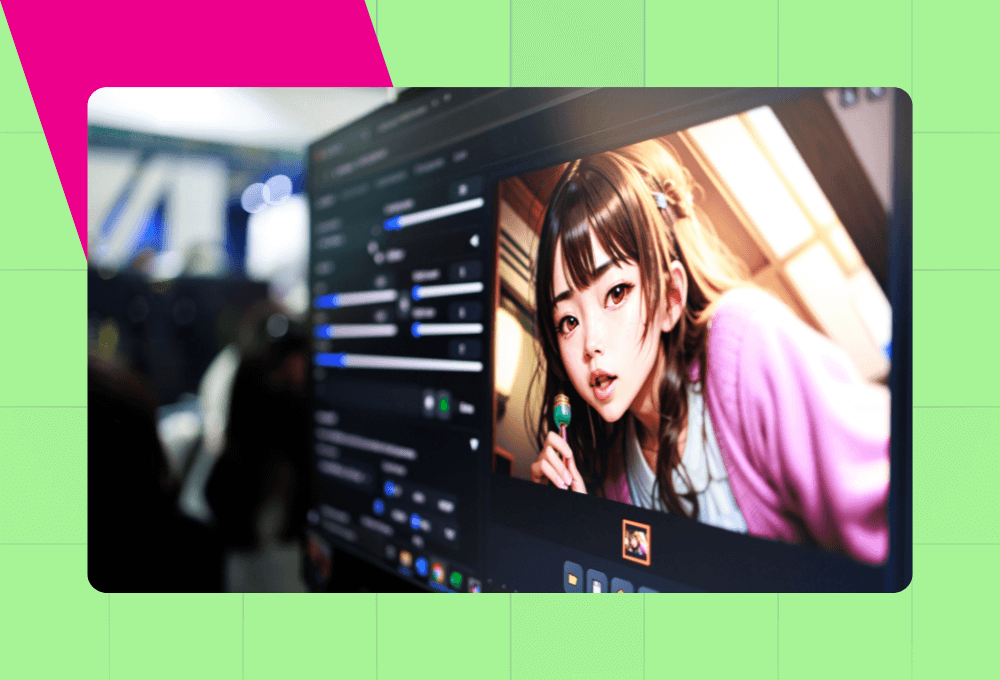
This guide will help you learn how to use generative AI tools to help create art. You’ll learn more about AI-generated art, how to use text prompts to create new work and a few AI art-creator tools to get started.
1. Ideation
The first step to creating AI art is to define your artistic vision. Define the style, theme, and concept you want to explore. For instance, you want to make AI art of a peaceful landscape using oil painting techniques. You can pass the following prompt to an AI image generator: peaceful landscape, warm sky, oil painting, realistic. The AI art creator will use your input to generate art that mimics the human artist’s style.
2. Choosing the Right Tools and Software
Once you define your vision, the next step in creating AI art is finding the right tools for the job. Many tools exist on the market—some are open source and free, and others are paid products.
Consider your ability when deciding which AI platform to use. Tools like OpenAI’s DALL-E 3, Leonardo AI, and Wombo Dream are relatively easy to use. First, sign up for an account, then input a text prompt, and receive an image in return. Please read our blog about the best AI art generator tools for a more detailed review of these tools.
3. Data Collection and Preparation
If you want the best results from your AI-generated images, you must tell the AI precisely what you want. To do this, gather pictures in your desired style and feed them to the AI. This process is known as fine-tuning (i.e., taking an existing AI model and refining it to train it to produce the desired output). Essentially, you’re teaching the software to follow new patterns.
First, gather photos, paintings, and digital art similar to your desired output style. Once you gather the material, you must clean up your new image data set. This includes making the images consistent in color, size, and format.
4. Exploring Different Styles and Techniques
The styles and techniques you use to create AI art may not immediately produce the best results. You’re still relying on an AI system to deliver content—and those AI algorithms aren’t perfect. Experiment with different styles and techniques with AI generation. Changing your image prompts to use different phrasing can result in dramatically different results.
5. Refinement and Iteration
Creating AI artwork is an iterative process. You experiment with different inputs, examine the output to see what improvements you can make, and test changes to your input to see the new results.
The easiest way to do this is by changing your input prompts. Change your words, phrases, and styles to see different results. Then, combine those changes until you get what you want. Additionally, fine-tuning enhances your art. You may find a few excellent AI outputs that aren’t quite there. Fine-tune your AI with your desired output for a better result in those styles.
6. Finalization and Presentation
You’ll get much better results once you finish tuning your AI prompts. But don’t take the AI output; use it immediately. Take time to add personal touches to your art. Use AI art generators as creative partners to get you close to the finish line. Then, take the output and make the artwork your own.
Use image editors to change minor details and add unique artistic techniques. Incorporating your own creative vision and style enhances the artwork’s overall quality and originality.
Can AI Beat Human Creativity?
In this article, we’ve seen how AI assists in creating and appreciating art and how AI artists leverage AI in their diverse artistic practices. The field is evolving, but one thing is clear: AI is not replacing human creativity.
While AI art creators offer incredible potential, combining them with professional design can elevate your work to the next level. For consistent, high-quality artwork and illustrations, consider a subscription-based graphic design service like Penji. Browse our portfolio and watch a short demo video to learn about Penji’s services.
About the author

Rowena Zaballa
With a background as a former government employee specializing in urban planning, Rowena transitioned into the world of blogging and SEO content writing. As a passionate storyteller, she uses her expertise to craft engaging and informative content for various audiences.

